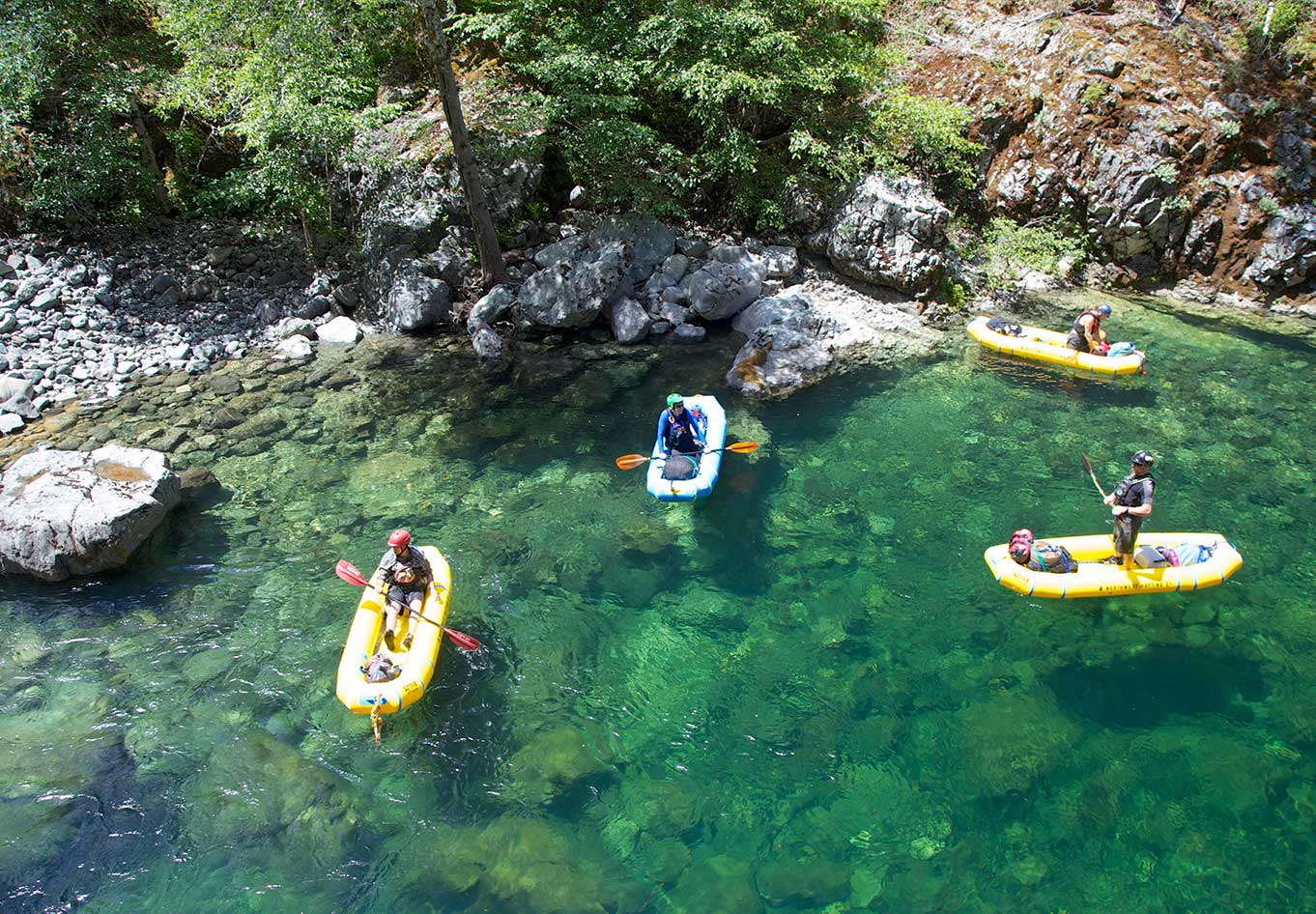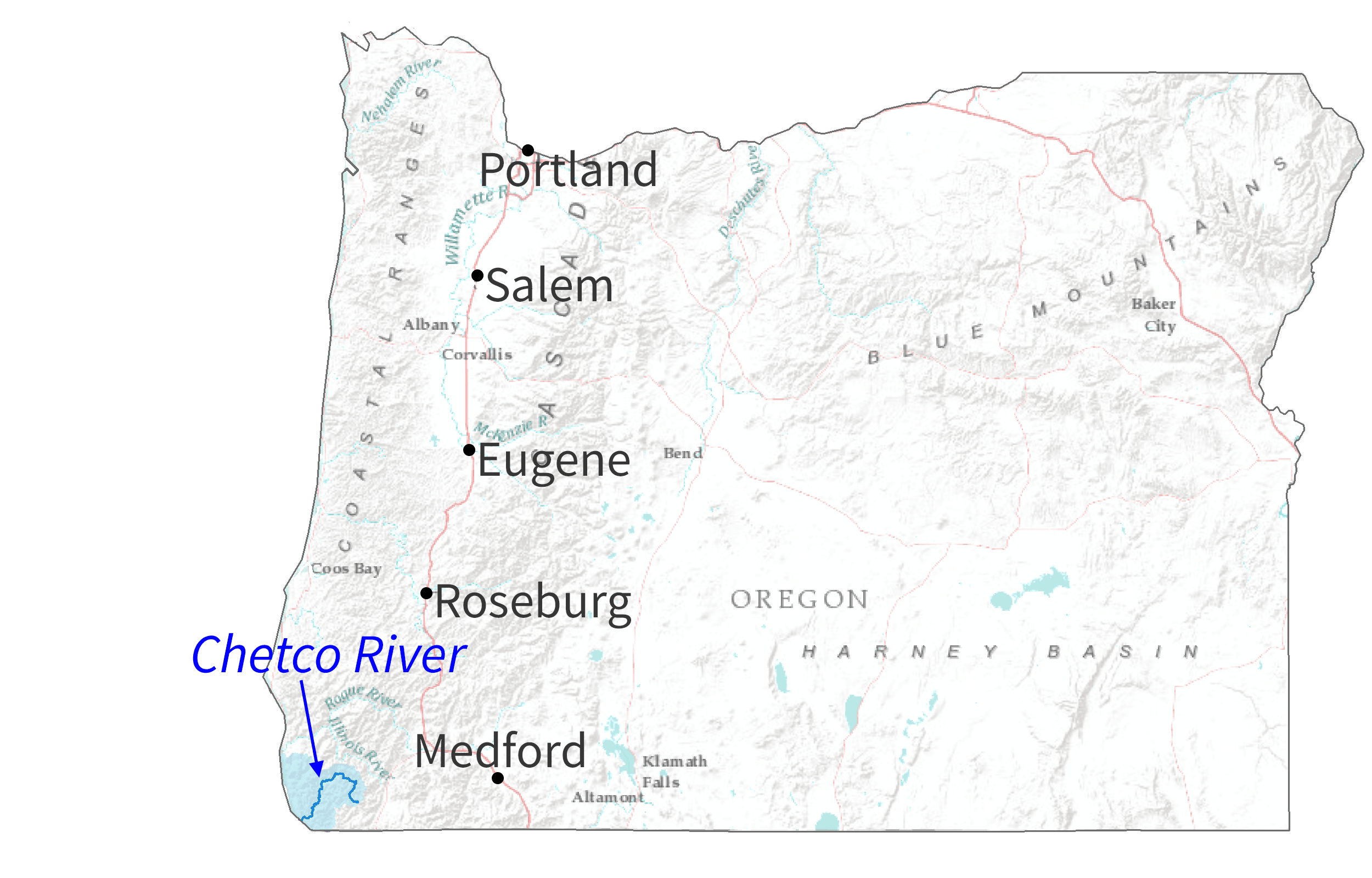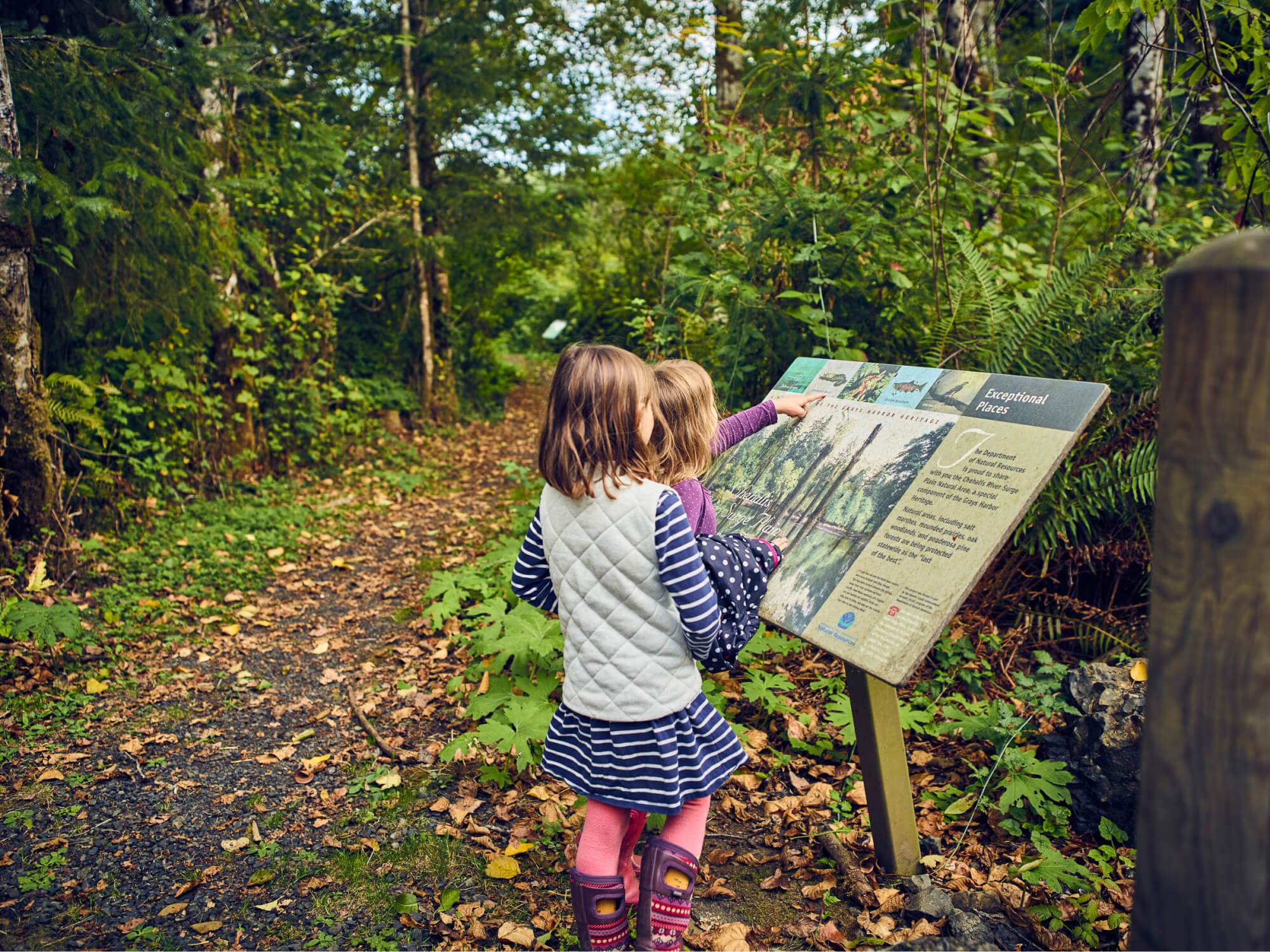
Fish
The Chetco is a premier salmon and trout stream with healthy native populations of coho salmon, fall Chinook and winter steelhead, as well as sea-run cutthroat and wild rainbow trout. It’s one of the few West Coast salmon streams with extensive stretches flowing through wilderness. As a result, its exceptional water quality and free-flowing length support some of the highest salmon returns of any Oregon stream.

Biodiversity
The Chetco basin hosts the greatest wildlife diversity in Oregon, with 200 species, including imperiled birds, large mammals and rare species like the Siskiyou chipmunk. Complex geologic soils harbor a botanist’s paradise with many endemic plants, including the purple-blooming Kalmiopsis leachiana, which grows only in its namesake wilderness. The Chetco is also home to the northernmost redwood grove on Earth.
-
Paddle
Kayaking the Chetco is a life-changing experience—but first you have to get there. Experienced paddlers can hike a full day (with gear) from the Babyfoot Lake Trailhead to tackle the Class IV-V upper Chetco over several days. The lower gorge has shorter class II-IV floats. Northwest Rafting Co. and Wilderness Canyon Adventures offer guided trips.
-
Hike
While many trails were ravaged by fire, hiking is still a great way to see this landscape-in-flux. The Chetco Gorge Trail (#1112) escaped the fire and follows the river for 1.7 miles. A challenging 10-mile hike starts at Babyfoot Lake Trailhead (#1124A) and takes you into the wilderness, then descends steeply into the upper canyon for an unforgettable swim.
-
Fish
Home to strong fisheries of both fall Chinook and winter steelhead, the Chetco is a great angling destination, especially if you have a boat. Some of the easiest bank access on the lower river is within Loeb State Park, which also has a popular boat launch. Fishing for sea-run cutthroats can also be excellent.
-
Drive
From Highway 101 in Brookings, go east on North Bank Chetco River Road (#1376) to access boat launches, trails and campsites in the national forest. To reach the upper Chetco, you can take Highway 199 north from Cave Junction, go west on 8 Dollar Road/NF-4201 to FS Road #140, then south until you reach the Babyfoot Lake Trailhead. Then hike into the wilderness. Bring maps of the Gold Beach and Wild Rivers Ranger Districts. Watch for poison oak.
The WRC Story
When a massive gold operation threatened the Chetco River’s wild beauty, Western Rivers Conservancy worked for a decade to prevent destructive placer mining in the heart of the Kalmiopsis Wilderness. Gold mines would have endangered nine miles of the Chetco’s headwaters, potentially triggering erosion and slope failure that would have spoiled the river’s famously clear water and the habitat the Chetco supports. WRC was unwilling to let the Chetco River face these risks.
After 10 years of negotiating with the claim holder, WRC prevailed in 1999 with the help of Klamath-Siskiyou Wildlands Center. We purchased all the mineral rights along the upper Chetco and conveyed the land to the US Forest Service for protection within the Kalmiopsis Wilderness, ensuring the Chetco’s clear, cold, emerald waters remain truly and forever wild, scenic and clear.


Best Time of Year
- Boating
- Jun-Sep
- Salmon fishing
- Sep-Dec
- Steelhead fishing
- Dec-Mar
- Chetco River
- May-Sep


